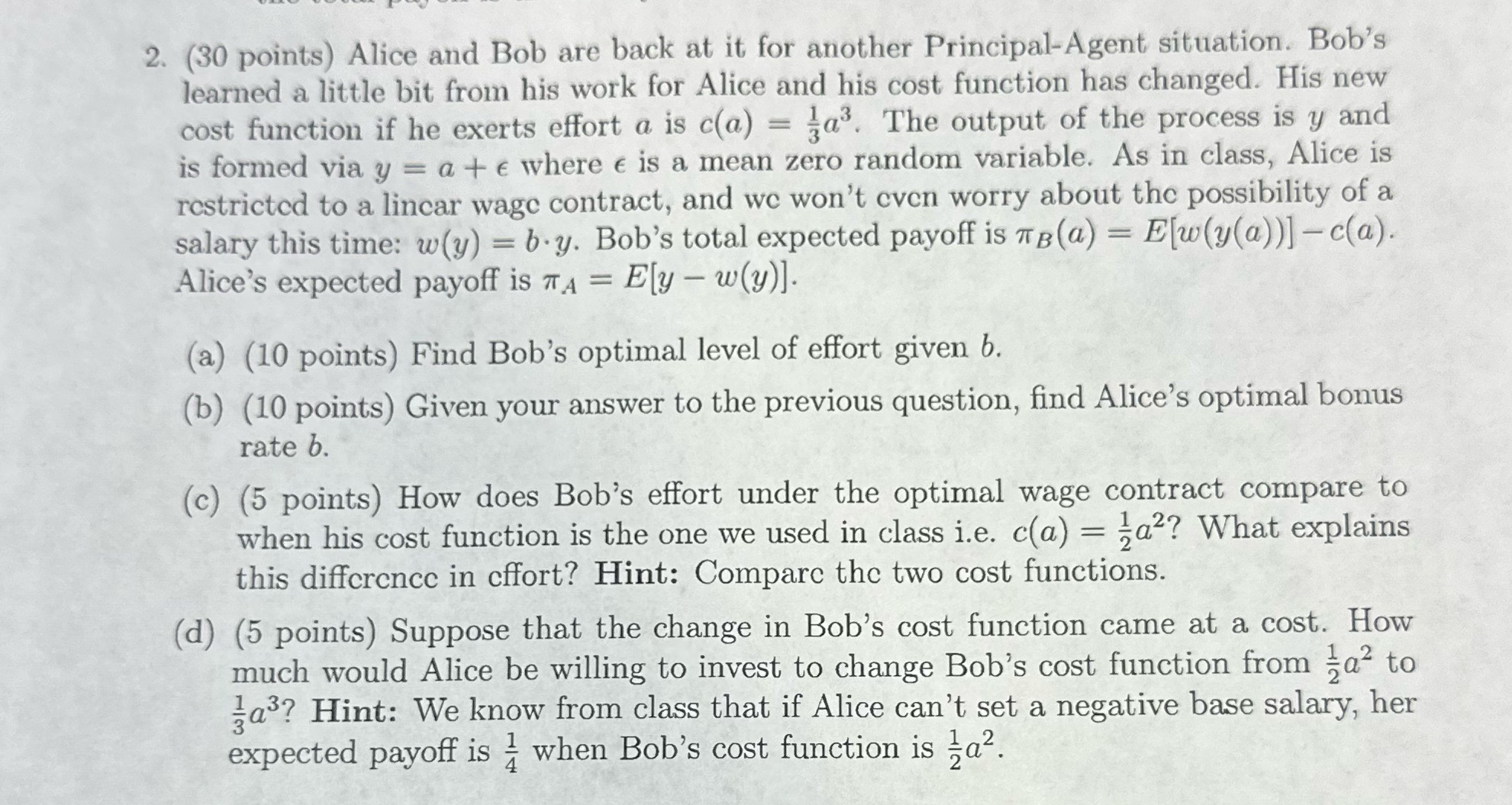Answered step by step
Verified Expert Solution
Question
1 Approved Answer
2. (30 points) Alice and Bob are back at it for another Principal-Agent situation. Bob's learned a little bit from his work for Alice

2. (30 points) Alice and Bob are back at it for another Principal-Agent situation. Bob's learned a little bit from his work for Alice and his cost function has changed. His new cost function if he exerts effort a is c(a) = a. The output of the process is y and is formed via y = a + e where e is a mean zero random variable. As in class, Alice is restricted to a lincar wage contract, and we won't even worry about the possibility of a salary this time: w(y) = b.y. Bob's total expected payoff is TB (a) = E[w(y(a))]-c(a). Alice's expected payoff is TA = Ely - w(y)]. (a) (10 points) Find Bob's optimal level of effort given b. (b) (10 points) Given your answer to the previous question, find Alice's optimal bonus rate b. (c) (5 points) How does Bob's effort under the optimal wage contract compare to when his cost function is the one we used in class i.e. c(a)=a? What explains this difference in cffort? Hint: Compare the two cost functions. (d) (5 points) Suppose that the change in Bob's cost function came at a cost. How much would Alice be willing to invest to change Bob's cost function from a to a? Hint: We know from class that if Alice can't set a negative base salary, her expected payoff is when Bob's cost function is a.
Step by Step Solution
There are 3 Steps involved in it
Step: 1
a Bobs optimal level of effort can be found by maximizing his expected payoff function piBa Ewya ca Given wy by and y a epsilon we can express Bobs ex...
Get Instant Access to Expert-Tailored Solutions
See step-by-step solutions with expert insights and AI powered tools for academic success
Step: 2

Step: 3

Ace Your Homework with AI
Get the answers you need in no time with our AI-driven, step-by-step assistance
Get Started


